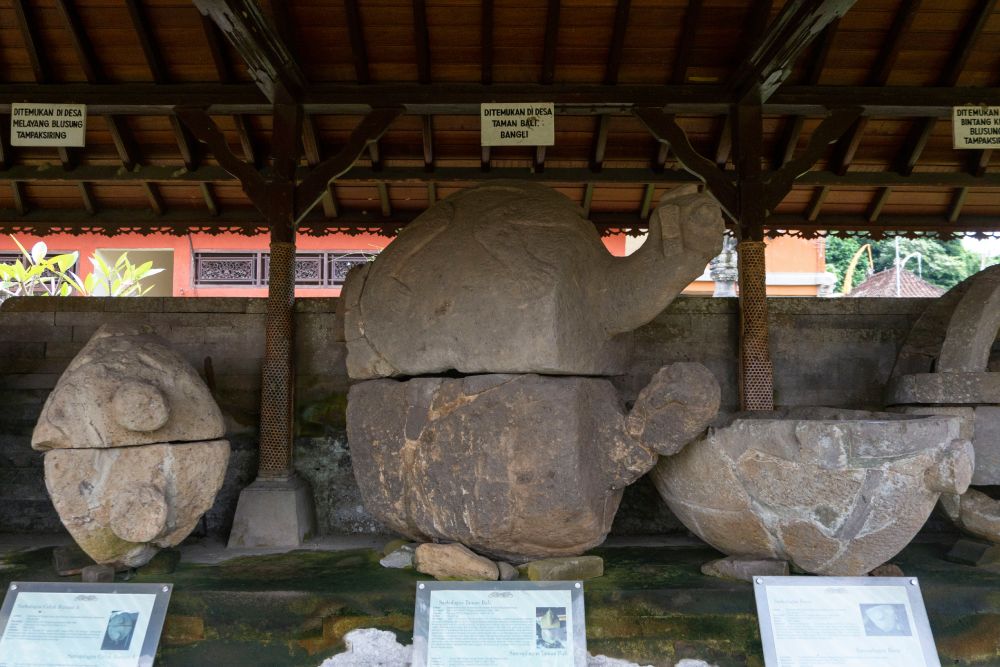
For the history buffs out there, Museum Gedong Arca in Blahbatuh, Gianyar, is a lesser-visited museum that houses ancient artefacts dating back to Bali’s palaeolithic era, including the largest collection of ancient sarcophagi.
Most people’s perception of Balinese history is dominated by events of the last millennium. If we rewind the clock, we will see influences from the Dutch colonisation, before that the arrival of the Majapahit Empire, and before that the blurry history of what is considered Bali’s ‘ancient’ period, spanning from the 8th to 14th centuries. The likes of the Prasasti Blanjong (Blanjong inscription), Goa Gajah, Candi Gunung Kawi are remnants of this period; of Bali’s early ‘Indianised’ Hindu-Buddhist kingdoms.
But what preceded these? Today’s Bali still reflects the influences of these historical periods, but prior to that, it was a very different island indeed. It is this past that Museum Gedong Arca (also known as Museum Arkeologi) puts on display, ‘arca’ being the Indonesian word for the statute.
The museum was founded in the late 1950s by Indonesian archaeologists of the time. It was built to house the various prehistoric relics and artefacts found in the distant corners of Bali. More than 3,000 pieces are now stored here, organised and displayed in chronological order for visitors to discover a past of Bali that many may not have heard about.
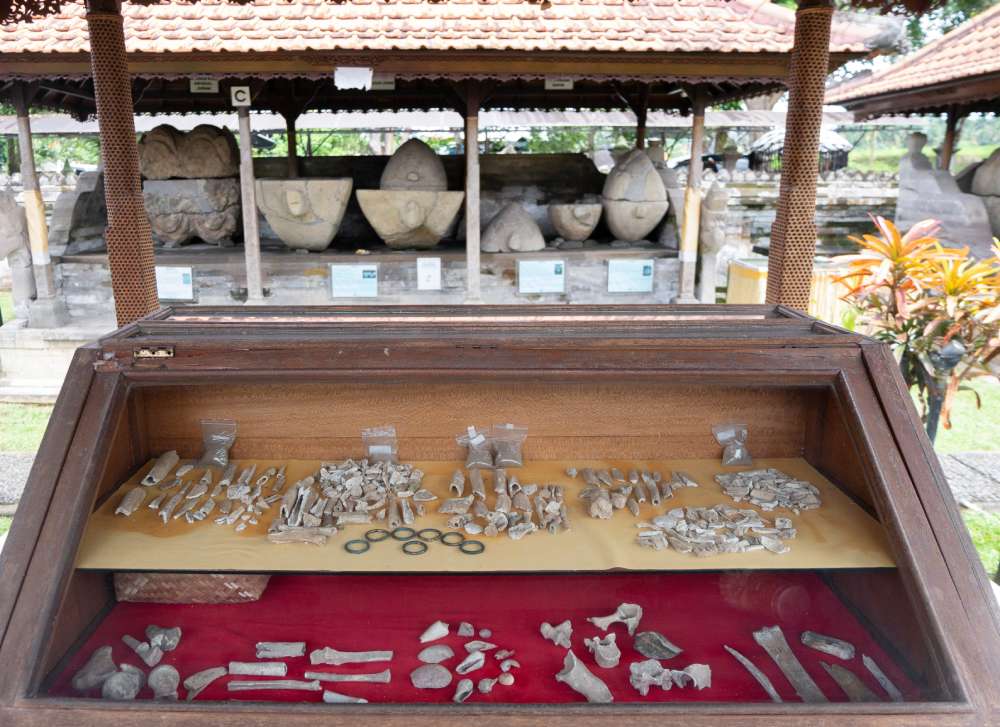
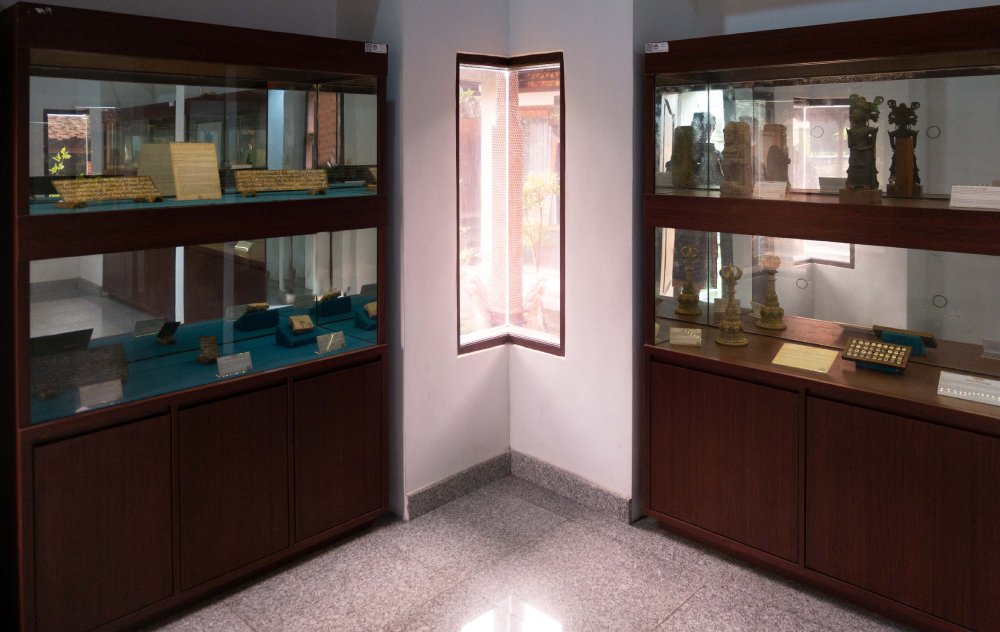
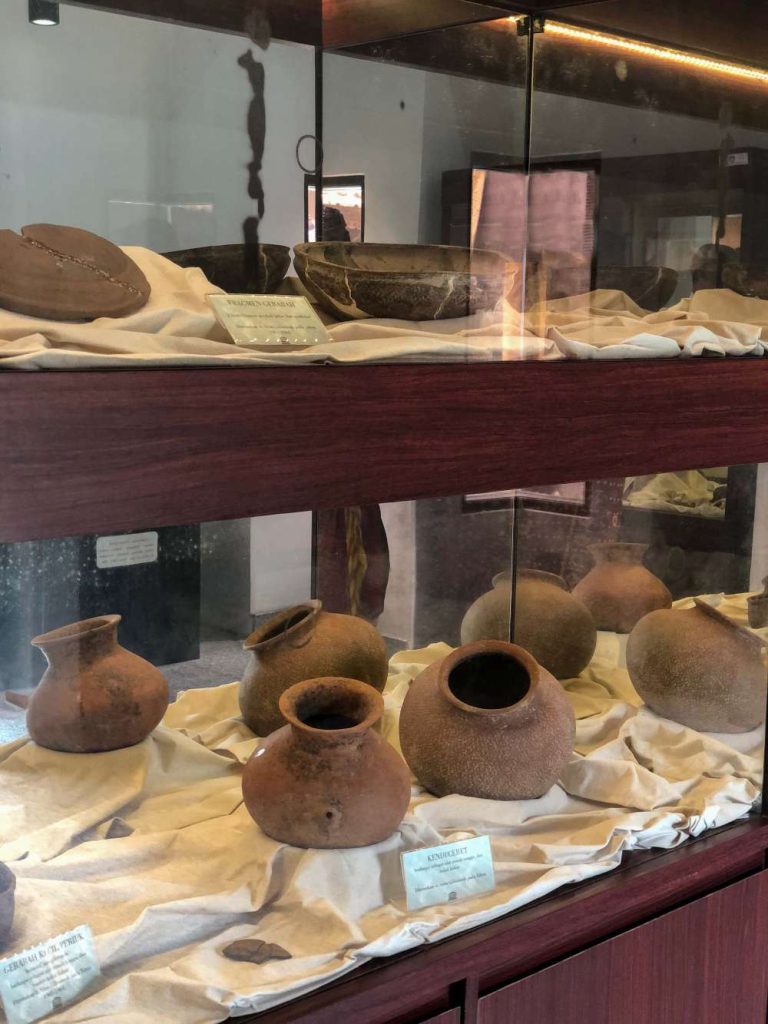
A series of display rooms and pavilions are dotted around the museum compound. The first opens with Bali’s Palaeolithic Age, otherwise known as the Old Stone Age. Yes, Bali was once home to hunter-gatherers, assumed to be an extinct human species known as homo erectus, who used stone tools. Remnants of these tools were found in the villages of Trunyan and Sembiran, examples of which are on display at the museum and date back to 600,000 BCE! Moving forward in time, the museum shows some relics of a slightly more advanced culture of the Mesolithic Age, otherwise known as the Middle Stone Age, with improved stone tools. This period in Bali’s history is dated to around 20,000 BCE.
Following this fascinating period comes a more sophisticated Neolithic Age, which marks the arrival of Austronesian peoples to Indonesia from South China. Dated between 3,000 to 600 BCE, these migrants brought with them agriculture, namely rice growing techniques using mixed-material hand tools, plus evidence of ceramic pottery.
The most intriguing aspect of this age is its stone sarcophagi, which the museum houses more than 50. These giant stone coffins are of varying sizes and styles, some featuring human or animal heads carved as handles — these are clues to the culture of the time, as bodies would have been placed in foetal positions to fit into these ancient tombs. When these sarcophagi were found, some still had bones of the departed, with burial goods found nearby. These are all on display in a large courtyard dedicated to these giant, mysterious artefacts. Evidence of these Neolithic communities has been found from Cekik Village, west Bali all the way to Bangli, central-east Bali.
The intriguing displays continue at the museum, the next featuring evidence of Bali’s Bronze Age. Intricate metal relics, from statuettes to earrings, spear tips and coins, dated between 600 BCE to 800 AD, show a sophisticated grasp of metallurgy. This is assumed to have been an import from Vietnam’s ‘Dong Son’ culture of the time, evidence of migration and trade during that period. This is the time in which the ‘Moon of Pejeng’, was made: a bronze ceremonial kettledrum said to be the largest of its kind in the world. The 186cm relic is kept at Pura Penataran Sasih Temple in Pejeng, east of Ubud.
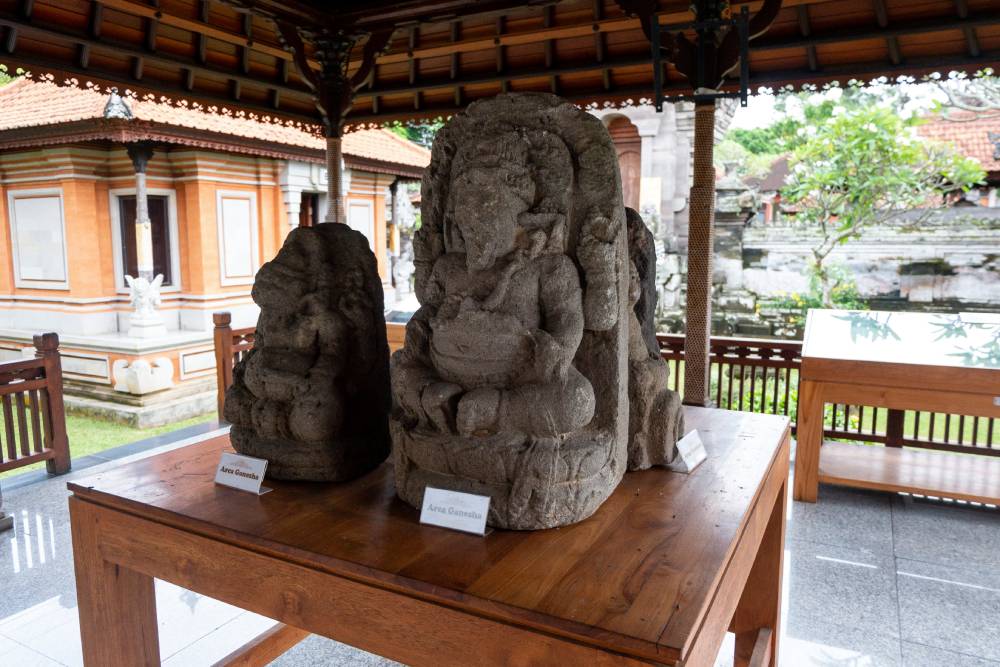
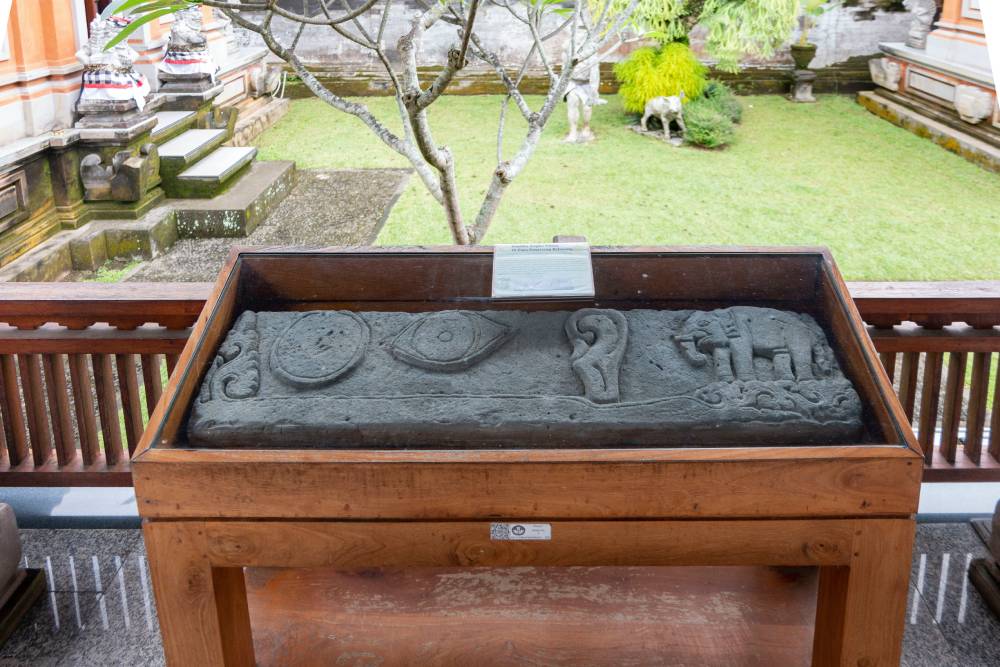
Lastly, Museum Gedong Arca moves into Bali’s ancient period. It is this period that really gives the museum its name, typified by the many statues that came out of this time. Little stone linggas, statuettes of Ganesha, Siwa, Durga and stupikas are evidence of the arrival of early Hindu-Buddhist influences, much like those found in Pura Puncak Penulisan in Kintamani. This marks the beginning of Bali’s written history, where ‘prasati’ (stone inscriptions) of the kings of old help to place timestamps in Bali’s pre-Majapahit past. The archaeological museum showcases replicas of these carvings, the most interesting being those found in Pura Penataran Belungsung showcasing an ancient numerical system that used images: the carvings of a moon, eye, ear and elephant translated into the year ‘1228’ on the Saka calendar year, or 1303 on the Gregorian Calendar.
Though very humble and simple, Museum Gedong Arca’s collection of artefacts, and the way it is displayed, helps to open visitors’ understanding of these intriguing periods in Balinese history. From tools to bones and giant sarcophagi, you are welcome to witness the clues and remnants of a prehistoric past.
Gedong Arca is open on weekdays, from 9am to 4pm. It is free entry and normally a museum guide is available to share insight into the displays and chronology. Location can be found here.







